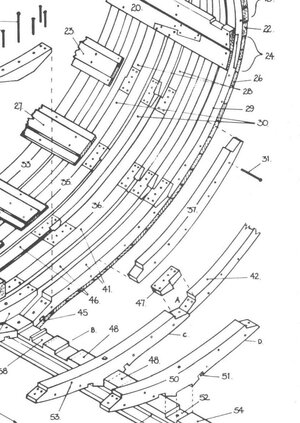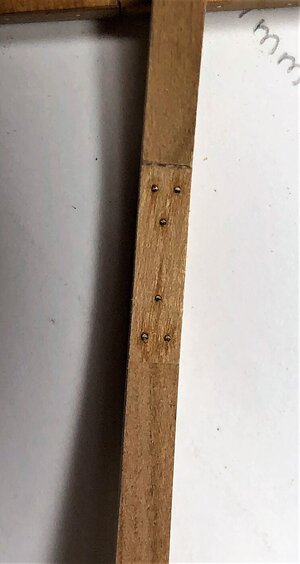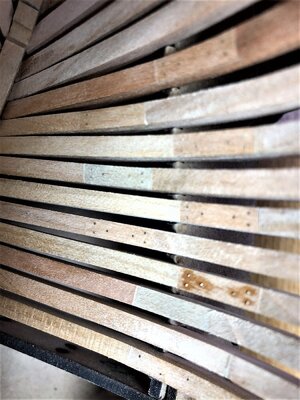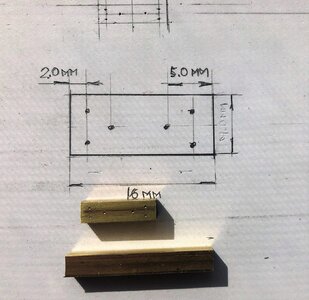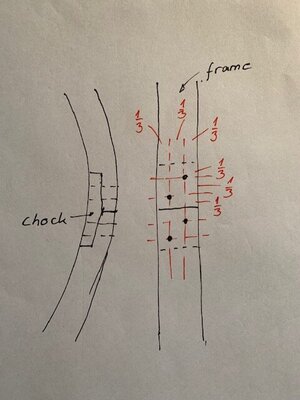Greetings... All hands on deck. This is not a regular post update, it is rather a question. With all, your help I made a decision for'bolt' placement and chose the brass as the imitation material. The 'chock' will be bolted using a pattern from the AOTS book. As for the long 'plain scarphs,' i made some samples and want to find out your thoughts. I am debating between #2 or #4. Note: the scarph joints are not sized (as they should be), they only to separate and emphasize the overview. Your opinions and comments are more than welcome!
1. all bolts are in the centerline
2. the middle bolt in the centerline
3. all bolts are diagonal placement
4. The middle bolt on the side
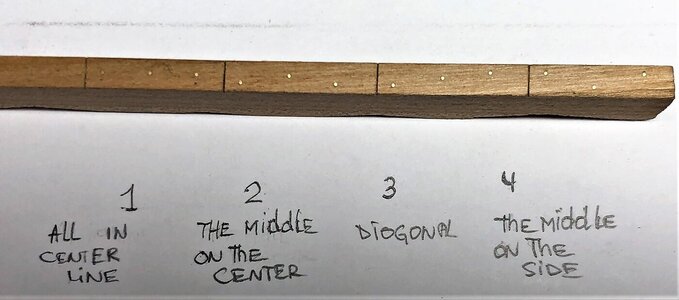
1. all bolts are in the centerline
2. the middle bolt in the centerline
3. all bolts are diagonal placement
4. The middle bolt on the side









